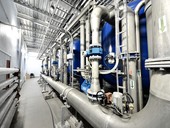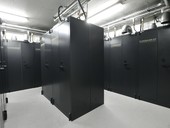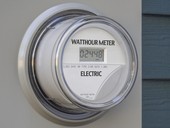Achieving the criteria set for effectively district heating will be a precondition for the development of central heat supply in the coming period. Heating companies are therefore looking for suitable alternative solutions. In this paper it is the view of the designer on a concrete example of the combination of the use of geothermal water and CHP.
Archiv článků od 7.5.2018 do 13.4.2020
This article describes a long-term Renewables Power Purchase Agreement under which a consumer purchases renewable electricity directly from an electricity producer. Signing a renewables PPA ensures that the producer acquires the long-term revenue stream through the sale of energy and the costumer gets the fixed electricity price for the entire period of the contract.
Decree No. 269/2015 Coll. I consider it one of the worst regulations I have ever encountered. I start from the experience of people who asked me for advice on what to do when they have winter at home and yet the highest share of heating costs in the whole house. At first I bet on the effect of heat parasitizing unoccupied neighboring apartments, but then I thought of looking at positional coefficients.
Unfortunately, the fairness in the allocation of the cost of heating flats in multi-dwelling buildings is most often taken by people who have no idea on what principles the heating of these houses is based. Out of ignorance they then create a problem where it is not at all, and to build a “solution” to construct a bizarre structure. The problem is that the field of heating revolves around the physical quantities of heat and temperature, whose names sound very similar in Czech, and therefore people often confuse them, even though they are completely different in meaning.
The article focuses on the introduction of renewable energy sources (RES) in the energy balance as primary energy sources, during the transformation process and their use for final consumption. The first part is devoted to basic terminology and primary energy sources, the second part focuses on the transformation process and final consumption.
The paper deals with the problem of optimal sizing of battery-powered hybrid power systems for HV extraction installations, where electricity consumption diagrams are available and it can be assumed that the nature of the operation will not change when photovoltaic technology is installed with battery storage. This is a difficult task, as each installation is specific to its nature of consumption, energy prices, location and investor requirements. The article outlines how to solve this problem by using the numerical optimization methods implemented in MicrOpt Design, the use of which is shown in a specific example.
Data centres are a significant energy consumer, which is related to both the operation of IT technology and its cooling. It is the part of the consumed energy intended for the cooling of data centres, which, in some cases, has the potential for saving measures. The paper targets the possibilities of using outdoor air for free cooling of data centres and tries to financially quantify possible savings. Several analyses were carried out based on a real example of an existing data room equipped with a cooling circulation system.
The largest market share of new registered passenger battery electric vehicles in Europe is in Norway (31 %), the Netherlands (5 %), Sweden, Austria and France (2 %). The share of electric vehicles in new vehicles registrations remains low in the Czech Republic, reaching 0.27 % in 2018. Policy measures can significantly support adoption of electric vehicles by consumers. Based on a literature review, we discuss a wide range of policy measures to support battery electric vehicles (BEV), including effectiveness of these measures. Further, we describe support measures in the Czech Republic. Last, we aim at the expected trends in BEVs and a policy design that may support to increase market share of BEV technology when undesirable side effects on inequality, public finance and the environment are minimised.
Paper deals with the definition of energy flexible building, its impact on the stability of the grid with the planned increasing share of energy from renewable sources and the possibility of using the heat storage capacity of building structures. Paper further analyzes the selected methodology for evaluation of the energy flexibible building and gives an example of thermally activated building structures.
Unique charging station for electric vehicles was opened in february at the Prague Fair Grounds. The project combines recharging of electric vehicles with other functions: by producing their own energy using roof photovoltaics and by regulating overvoltage or undervoltage of the surrounding network using a battery system.
It is expected that the new administrative centre of Lesy České republiky would be an exemplary demonstration of the use of wood, which will be used in the form of the building material or in which the importance of wood will be emphasized in another appropriate way. The paper is focused on a proposal that won the international architectural competition in 2016.
The thesis is focused on smart metering system and ripple control. The first theoretical part describes function of ripple control. The second theoretical part presents smart metering technology with introduction of a new system of energy settlement. The new system of energy settlement use prices in the intraday market which are published on Electric grid operator’s website. The system can be considered as a dynamic tariff. The system of energy settlement is demonstrated on consumption of the family house. The comparison of both systems is demonstrated in the final part of the thesis.
The thesis is focused on smart metering system and ripple control. The first theoretical part describes function of ripple control. The second theoretical part presents smart metering technology with introduction of a new system of energy settlement. The new system of energy settlement use prices in the intraday market which are published on Electric grid operator’s website. The system can be considered as a dynamic tariff. The system of energy settlement is demonstrated on consumption of the family house. The comparison of both systems is demonstrated in the final part of the thesis.
Wood and the materials on its basis fulfil the requirements of an ever-evolving and accelerating society. In addition to naturally grown wood, wood-based materials are frequently used as a basic material for production of furniture and for building constructions as well. Looking at changes in waste management, a significant shift from the waste to the circular economy can be observed. The valuable raw materials are kept in the production cycle instead of landfilling or burning. Wood and wooden products can be efficiently separated in waste management, reused and recycled. The so-called wood waste – old furniture, wooden pallets, window and door frames, demolition wood, used lumber, bark and other wood residues can be reused in particleboard production. Particle board manufacturers in the Czech Republic have adopted progressive waste management and currently use 60% of recycled wood into particle boards. A completed life cycle analysis (LCA) of OSB demonstrates that replacing of 50% of natural fibres with recycled wood has significant environmental benefits. The objective is to push furthermore on effective legislation to promote waste material utilization and thus lead to a more sophisticated waste wood collecting.
When deciding on energy investments, consultants and designers often rely on data listed in the technical data sheets provided by manufacturers. This can lead to a very unpleasant surprise for operators - fuel consumption is often significantly higher than assumed by the assessment. Especially in terms of smaller heat sources, this approach leads to errors and consequent significant economic losses.
The use of the Stirling engine and fuel cells in micro-cogeneration units is not yet very extensive, so the facilities of the University of Žilina have been in a long-term test run. This article aims to compare the gaseous emissions produced in the operation of the given micro-cogeneration units compared to conventional micro-CHP units and heat sources and, in particular, to popularize the equipment of such types among the broad professional public.
zpět na aktuální články



















